There are still a lot of unknowns with this system, since the tropical cyclone has not quite formed yet, with a well-defined center that aircraft has gotten any data from to feed the computer forecast models. However, landfall is expecting Thursday evening or night, most likely along or near the Florida Bend, and we have a lot better consensus than usual among the forecast models as to where this thing is going. So if you are in or near the general path of this system (which will likely develop into a hurricane quickly over the next day or two), please be ready for hurricane conditions.
A Tropical Storm Watch is already up for parts of the Southwest coast of Florida. Much of Western Cuba and the Eastern coast of the Yucatan Peninsula are under a Tropical Storm Warning, also includes Grand Cayman. Some of those same areas are also under a Hurricane Watch. As it will be a close call whether they see only tropical storm conditions or hurricane conditions. This thing could intensify rapidly as it moves into the Gulf of Mexico, and I think it probably will.
000
WTNT34 KNHC 240238
TCPAT4
BULLETIN
Potential Tropical Cyclone Nine Advisory Number 3
NWS National Hurricane Center Miami FL AL092024
1100 PM EDT Mon Sep 23 2024
...STORM SURGE AND TROPICAL STORM WATCHES ISSUED FOR A PORTION OF
SOUTHWEST FLORIDA...
SUMMARY OF 1100 PM EDT...0300 UTC...INFORMATION
-----------------------------------------------
LOCATION...18.4N 82.4W
ABOUT 100 MI...160 KM SW OF GRAND CAYMAN
ABOUT 290 MI...470 KM SE OF THE WESTERN TIP OF CUBA
MAXIMUM SUSTAINED WINDS...35 MPH...55 KM/H
PRESENT MOVEMENT...NNW OR 330 DEGREES AT 6 MPH...9 KM/H
MINIMUM CENTRAL PRESSURE...1002 MB...29.59 INCHES
WATCHES AND WARNINGS
--------------------
CHANGES WITH THIS ADVISORY:
A Storm Surge Watch has been issued along the southwest coast of
Florida from Bonita Beach to Flamingo.
A Tropical Storm Watch has been issued along the southwest coast of
Florida from Bonita Beach southward to Flamingo.
SUMMARY OF WATCHES AND WARNINGS IN EFFECT:
A Storm Surge Watch is in effect for...
* Bonita Beach southward to Flamingo
A Hurricane Watch is in effect for...
* Cabo Catoche to Tulum, Mexico
* Cuban province of Pinar del Rio
A Tropical Storm Warning is in effect for...
* Grand Cayman
* Rio Lagartos to Tulum, Mexico
* Cuban provinces of Artemisa, and Pinar del Rio, and the Isle of
Youth
A Tropical Storm Watch is in effect for...
* Dry Tortugas
* Lower Keys west of the Seven Mile Bridge
* Bonita Beach southward to Flamingo
A Storm Surge Watch means there is a possibility of life-
threatening inundation, from rising water moving inland from the
coastline, in the indicated locations during the next 48 hours.
For a depiction of areas at risk, please see the National Weather
Service Storm Surge Watch/Warning Graphic, available at
hurricanes.gov.
A Tropical Storm Warning means that tropical storm conditions are
expected somewhere within the warning area, in this case within
the next 24 to 36 hours.
A Hurricane Watch means that hurricane conditions are possible
within the watch area. A watch is typically issued 48 hours
before the anticipated first occurrence of tropical-storm-force
winds, conditions that make outside preparations difficult or
dangerous.
A Tropical Storm Watch means that tropical storm conditions are
possible within the watch area, generally within 48 hours.
Interests along the northeastern Gulf Coast, including the Florida
Panhandle and the Florida west coast, should monitor the progress of
this system. Additional watches or warnings will likely be
required on Tuesday.
For storm information specific to your area in the United
States, including possible inland watches and warnings, please
monitor products issued by your local National Weather Service
forecast office. For storm information specific to your area
outside of the United States, please monitor products issued by
your national meteorological service.
DISCUSSION AND OUTLOOK
----------------------
At 1100 PM EDT (0300 UTC), the disturbance was centered near
latitude 18.4 North, longitude 82.4 West. The system is moving
toward the north-northwest near 6 mph (9 km/h). A northwestward
motion is expected on Tuesday and Tuesday night, followed by a
faster northward to north-northeastward motion on Wednesday and
Thursday. On the forecast track, the center of the system is
forecast to move across the northwestern Caribbean Sea through
Tuesday night, and then over the eastern Gulf of Mexico on Wednesday
and Thursday.
Maximum sustained winds are near 35 mph (55 km/h) with higher gusts.
Strengthening is expected during the next few days, and the system
is forecast to become a hurricane on Wednesday and continue
strengthening on Thursday as it moves across the eastern Gulf of
Mexico.
* Formation chance through 48 hours...high ...90 percent.
* Formation chance through 7 days...high...90 percent.
The estimated minimum central pressure is 1002 mb (29.59 inches).
HAZARDS AFFECTING LAND
----------------------
Key Messages for Potential Tropical Cyclone Nine can be found in
the Tropical Cyclone Discussion under AWIPS header MIATCDAT4 and
WMO header WTNT44 KNHC and on the web at
hurricanes.gov/text/MIATCDAT4.shtml
RAINFALL: Potential Tropical Cyclone Nine is expected to produce
total rain accumulations of 4 to 8 inches over western Cuba and the
Cayman Islands with isolated totals around 12 inches. Over the
eastern Yucatan Peninsula, 2 to 4 inches of rain is expected with
isolated totals over 6 inches. This rainfall brings a risk of
considerable flooding.
Over the Southeastern U.S., Potential Tropical Cyclone Nine is
expected to produce total rain accumulations of 3 to 6 inches with
isolated totals around 10 inches. This rainfall will likely result
in areas of locally considerable flash and urban flooding, with
minor to isolated moderate river flooding also possible.
For a complete depiction of forecast rainfall associated with
Potential Tropical Cyclone Nine, please see the National Weather
Service Storm Total Rainfall Graphic, available at
hurricanes.gov/graphics_at4.shtml?rainqpf and the Flash Flood Risk
graphic at hurricanes.gov/graphics_at4.shtml?ero.
STORM SURGE: The combination of a dangerous storm surge and the
tide will cause normally dry areas near the coast to be flooded by
rising waters moving inland from the shoreline. The water could
reach the following heights above ground somewhere in the indicated
areas if the peak surge occurs at the time of high tide...
Bonita Beach to Flamingo...2-4 ft
Dry Tortugas...1-3 ft
Florida Keys...1-3 ft
Storm surge could raise water levels by as much as 2 to 4 feet above
normal tide levels in areas of onshore winds along the southern
coast of Pinar del Rio, Cuba, including the Isle of Youth.
Storm surge could raise water levels by as much as 2 to 4 feet above
ground level in areas of onshore winds within the warning area along
the east coast of the Yucatan Peninsula.
WIND: Hurricane conditions are possible within the watch areas in
Cuba and Mexico by early Wednesday. Tropical storm conditions are
expected in the warning areas in Cuba and Mexico beginning on
Tuesday. Tropical storm conditions are possible in the watch area
beginning on Wednesday.
SURF: Swells generated by the system will affect the southern coast
of Cuba and the Yucatan Peninsula of Mexico during the next couple
of days. Swells will spread northward toward the west coast of
Florida and the northeastern Gulf Coast on Wednesday and Thursday.
These swells are likely to cause life-threatening surf and rip
current conditions. Please consult products from your local weather
office.
NEXT ADVISORY
-------------
Next intermediate advisory at 200 AM EDT.
Next complete advisory at 500 AM EDT.
$$
Forecaster Pasch
967
WTNT44 KNHC 240239
TCDAT4
Potential Tropical Cyclone Nine Discussion Number 3
NWS National Hurricane Center Miami FL AL092024
1100 PM EDT Mon Sep 23 2024
Satellite imagery indicates that there has been little change in
the organization of the system since earlier today. Most of the
deep convection is over the eastern part of the broad circulation.
Animation of proxy-vis GOES images, and radar observations from
Grand Cayman Weather Service suggest that the disturbance still
does not have a well-defined center of circulation, so the system is
kept as a potential tropical cyclone for the time being. The
advisory intensity is held at 30 kt which is in agreement with a
Dvorak estimate from TAFB. An Air Force reconnaissance aircraft is
scheduled to investigate the area in a few hours to provide a
better description of the system's structure along with an updated
intensity estimate.
The initial motion estimate is a rather uncertain 330/5 kt. During
the next day or so, the disturbance is expected to turn
northwestward along the southern and southwestern side of a
mid-level high pressure area. Then, the high is expected to shift
eastward while a mid-level trough drops into the central United
States. This evolution of the steering pattern should cause the
system to accelerate northward to north-northeastward over the
eastern Gulf of Mexico and toward the northeastern Gulf Coast
through Thursday. There is good agreement in the track guidance, and
the official forecast is close to the corrected dynamical consensus
model, HCCA, prediction. This is also very similar to the previous
NHC forecast.
An upper-level low over the northeastern Yucatan Peninsula has been
imparting some southwesterly vertical wind shear over the
disturbance. This has probably caused a temporary disruption in
development. Dynamical guidance shows this low weakening with time,
resulting in a reduction of shear in an environment that is
otherwise very conducive for intensification. The system is
projected to move over waters of very high ocean heat content,
which should lead to considerable strengthening during the forecast
period. The official intensity forecast is similar to the previous
one and lies between the statistical-dynamical model guidance and
the purely dynamical model predictions. It should be noted that
the 72-hour forecast allows for a little weakening after moving
inland, so the cyclone is still expected to be at major hurricane
strength at landfall.
It should also be noted that the cyclone is expected to grow in
size while it traverses the Gulf. Thus, the storm surge, wind, and
rainfall impacts will extend well away from the center, particularly
to the east of the system. In addition, the fast forward speed
while it crosses the coast will likely result in farther inland
penetration of strong winds over parts of the southeastern United
States after landfall.
KEY MESSAGES:
1. The disturbance is forecast to intensify and be near hurricane
strength when it reaches the far northwestern Caribbean Sea Tuesday
night. Tropical storm conditions are expected over portions of
western Cuba and the northeastern coast of the Yucatan Peninsula
with hurricane conditions possible.
2. The system is expected to intensify into a major hurricane
before it approaches the northeastern Gulf Coast on Thursday. While
it is too soon to pinpoint the exact location and magnitude of
impacts, the potential for life-threatening storm surge and
damaging hurricane-force winds along the coast of the Florida
Panhandle and the Florida west coast is increasing. Hurricane
Watches and additional Storm Surge watches will likely be issued
for a portion of that area Tuesday morning, and residents should
ensure they have their hurricane plan in place.
3. Potential Tropical Cyclone Nine will bring heavy rain to portions
of the western Caribbean, which will cause considerable flooding
and mudslides across western Cuba. Heavy rainfall will likely
result in locally considerable flash and urban flooding across
portions of Florida, with isolated flash and urban flooding
possible across the Southeast, Southern Appalachians, and the
Tennessee Valley Wednesday through Friday. Minor to isolated
moderate river flooding will be possible.
FORECAST POSITIONS AND MAX WINDS
INIT 24/0300Z 18.4N 82.4W 30 KT 35 MPH...POTENTIAL TROP CYCLONE
12H 24/1200Z 19.1N 83.5W 35 KT 40 MPH...TROPICAL CYCLONE
24H 25/0000Z 20.2N 84.6W 45 KT 50 MPH
36H 25/1200Z 21.6N 85.6W 60 KT 70 MPH
48H 26/0000Z 23.4N 85.8W 75 KT 85 MPH
60H 26/1200Z 26.2N 84.9W 90 KT 105 MPH
72H 27/0000Z 30.4N 83.9W 95 KT 110 MPH...INLAND
96H 28/0000Z 37.0N 85.0W 15 KT 15 MPH...POST-TROPICAL
120H 29/0000Z...DISSIPATED
$$
Forecaster Pasch
179
WTNT54 KNHC 240241
TDSAT4
Potencial de Ciclón Tropical Nueve Discusión Número 3
Centro Nacional de Huracanes del SNM Miami FL AL092024
1100 PM EDT lunes 23 de septiembre de 2024
Las imágenes de satélite indican que ha habido pocos cambios en la
organización del sistema desde más temprano hoy. La mayoría de la
convección profunda está sobre la parte este de la amplia
circulación. La animación de imágenes proxy-vis GOES, y las
observaciones de radar del Servicio de Meteorología de Gran Caimán
sugieren que la perturbación todavía no tiene un centro de
circulación bien definido, por lo que el sistema se mantiene como un
potencial ciclón tropical por el momento. La intensidad de
advertencia se mantiene a 30 kt que está de acuerdo con una
estimación de Dvorak de TAFB. Un avión de reconocimiento de la
Fuerza Aérea está programado para investigar el área en unas horas
para proporcionar una mejor descripción de la estructura del sistema
junto con una estimación de intensidad actualizada.
La estimación de movimiento inicial es un 330/5 kt. Durante el
próximo día más o menos, se espera que la perturbación gire hacia el
noroeste a lo largo del lado sur y el suroeste de un área de alta
presión de nivel medio. Luego, se espera que el máximo cambie hacia
el este mientras que una depresión de nivel medio cae en el centro
de Estados Unidos.Esta evolución del patrón de dirección debe hacer
que el sistema acelere hacia el norte a norte-noreste sobre el este
del Golfo de México y hacia la Costa noreste del Golfo hasta el
jueves. Hay un buen acuerdo en la guía de trayectoria, y el
pronóstico oficial está cerca del modelo de consenso dinámico
corregido, HCCA, predicción. Esto también es muy similar al
pronóstico anterior del NHC.
Una baja de nivel superior sobre la Península de Yucatán ha estado
impartiendo algo de cizalladura vertical del suroeste sobre la
perturbación. Esto probablemente ha causado una interrupción
temporal en el desarrollo. La guía dinámica muestra este bajo
debilitamiento con el tiempo, lo que resulta en una reducción de la
cizalladura en un ambiente que de otra manera es muy propicio para
la intensificación. Se proyecta que el sistema se moverá sobre aguas
de muy alto contenido de calor del océano, lo que debe conducir a un
fortalecimiento considerable durante el período de pronóstico. El
pronóstico de intensidad oficial es similar al anterior y se
encuentra entre la guía del modelo estadístico-dinámico y las
predicciones del modelo puramente dinámico. Debe tenerse en cuenta
que el pronóstico de 72 horas permite un poco de debilitamiento
después de moverse tierra adentro, por lo que todavía se espera que
el ciclón esté con fuerza de huracán mayor al tocar tierra.
También debe tenerse en cuenta que se espera que el ciclón crezca en
tamaño mientras atraviesa el Golfo. Por lo tanto, los impactos de la
marejada ciclónica, el viento y la lluvia se extenderán bien desde
el centro, particularmente al este del sistema. Además, la velocidad
de avance rápida mientras cruza la costa probablemente resultará en
una penetración más hacia el interior de vientos fuertes sobre
partes del sureste de Estados Unidos después de tocar tierra.
MENSAJES CLAVE:
1. Se pronostica que la perturbación se intensificará y estará cerca
de la fuerza de huracán cuando alcance el Mar Caribe el martes por
la noche. Se esperan condiciones de tormenta tropical sobre
porciones del oeste de Cuba y la costa noreste de la Península de
Yucatán con condiciones de huracán posibles.
2. Se espera que el sistema se intensifique en un huracán mayor
antes de que se acerque a la Costa noreste del Golfo el jueves. Si
bien es demasiado pronto para señalar la ubicación exacta y la
magnitud de los impactos, el potencial de marejada ciclónica que
amenazan la vida y vientos dañinos con fuerza de huracán a lo largo
de la costa del Panhandle de Florida y la costa oeste de Florida
está aumentando. Es probable que se emitirán Vigilancias de Huracán
y vigilancias de Marejada Ciclónica adicionales para una porción de
esa área el martes por la mañana, y los residentes deben asegurarse
de que tienen su plan de huracán en su lugar.
3. El potencial de Ciclón Tropical Nueve traerá fuertes lluvias a
porciones del Caribe occidental, lo que causará inundaciones y
deslizamientos de tierra considerables a través del oeste de Cuba.
Las fuertes lluvias probablemente resultarán en inundaciones
repentinas y urbanas localmente considerables a través de porciones
de Florida, con posibles inundaciones repentinas e urbanas aisladas
a través del Sureste, el sur de Appalachians, y el Valle de
Tennessee el miércoles hasta el viernes. Serán posibles inundaciones
fluviales menores a moderadas aisladas.
POSICIONES DE PRONÓSTICO Y VIENTOS MÁXIMOS
INIT 24/0300Z 18.4N 82.4W 30 KT 35 MPH...POTENCIAL CICLÓN DE TROP
12H 24/1200Z 19.1N 83.5W 35 KT 40 MPH...CICLÓN TROPICAL
24H 25/00Z 20.2N 84.6W 45 KT 50 MPH
36H 25/1200Z 21.6N 85.6W 60 KT 70 MPH
48H 26/00Z 23.4N 85.8W 75 KT 85 MPH
60H 26/1200Z 26.2N 84.9W 90 KT 105 MPH
72H 27/00Z 30.4N 83.9W 95 KT 110 MPH...INLAND
96H 28/00Z 37.0N 85.0W 15 KT 15 MPH...POST-TROPICAL
120H 29/00Z...DISIPADO
$$
Pronosticador Pasch
*** Este producto ha sido procesado automáticamente utilizando un
programa de traducción y puede contener omisiones y errores. El
Servicio Nacional de Meteorología no puede garantizar la precisión
del texto convertido. De haber alguna duda, el texto en inglés es
siempre la versión autorizada. ***
269
WTCA44 KNHC 240240
TASAT4
BOLETÍN
Potencial de Ciclón Tropical Nueve Advertencia Número 3
Centro Nacional de Huracanes del SNM Miami FL AL092024
1100 PM EDT lunes 23 de septiembre de 2024
...MAREJADA CICLÓNICA Y TORMENTA TROPICAL EMITIDAS PARA UNA PORCIÓN
DEL SUROESTE DE FLORIDA...
RESUMEN DE 1100 PM EDT...0300 UTC...INFORMACIÓN
-----------------------------------------------
UBICACIÓN...18.4N 82.4W
ALREDEDOR 100 MI...160 KM SW DE GRAND CAYMAN
ALREDEDOR 290 MI...470 KM SE DEL EXTREMO OESTE DE CUBA
VIENTOS MÁXIMOS SOSTENIDOS...35 MPH...55 KM/H
MOVIMIENTO ACTUAL...NO O 330 GRADOS A 6 MPH...9 KM/H
PRESIÓN CENTRAL MÍNIMA...1002 MB...29.59 PULGADAS
VIGILANCIAS Y AVISOS
--------------------
CAMBIOS CON ESTA ADVERTENCIA:
Se ha emitido una Vigilancia de Marejada Ciclónica a lo largo de la
costa suroeste de Florida desde Bonita Beach a Flamingo.
Se ha emitido una Vigilancia de Tormenta Tropical a lo largo de la
costa suroeste de Florida desde Bonita Beach hacia el sur a
Flamingo.
RESUMEN DE VIGILANCIAS Y AVISOS EN EFECTO:
Una Vigilancia de Marejada Ciclónica está en efecto para...
* Bonita Beach hacia el sur a Flamingo
Una Vigilancia de Huracán está en efecto para...
* Cabo Catoche a Tulum, México
* Provincia cubana de Pinar del Rio
Un Aviso de Tormenta Tropical está en efecto para...
* Gran Caimán
* Rio Lagartos a Tulum, México
* Provincias cubanas de Artemisa, y Pinar del Rio, y la Isla de
Youth
Una Vigilancia de Tormenta Tropical está en efecto para...
* Tortugas Secas
* Lower Keys al oeste del Puente de Seven Mile
* Bonita Beach hacia el sur a Flamingo
Una Vigilancia de Marejada Ciclónica significa que hay una
posibilidad de vida-
amenaza de inundación, por el agua ascendente que se mueve tierra
adentro desde el
la costa, en los lugares indicados durante las próximas 48 horas.
Para una representación de áreas en riesgo, por favor vea el Tiempo
Nacional
Gráfico de Vigilancia/Aviso de Marejada Ciclónica de Servicio,
disponible en
hurricanes.gov.
Un Aviso de Tormenta Tropical significa que se esperan condiciones
de tormenta tropical en algún lugar dentro del área de aviso, en
este caso dentro de las próximas 24 a 36 horas.
Una Vigilancia de Huracán significa que son posibles las condiciones
de huracán dentro del área de vigilancia. Una vigilancia se emite
típicamente 48 horas antes de la primera ocurrencia anticipada de
vientos con fuerza de tormenta tropical, condiciones que hacen los
preparativos exteriores difíciles o peligrosos.
Una Vigilancia de Tormenta Tropical significa que son posibles las
condiciones de tormenta tropical dentro del área de vigilancia,
generalmente dentro de 48 horas.
Los intereses a lo largo de la Costa noreste del Golfo, incluyendo
el Panhandle de Florida y la costa oeste de Florida, deben
monitorear el progreso de este sistema. Es probable que se requieran
vigilancias o avisos adicionales el martes.
Para información de la tormenta específica en su área en los Estados
Unidos, incluyendo posibles vigilancias y avisos tierra adentro, por
favor monitoree los productos emitidos por su oficina de pronóstico
del Servicio Nacional de Meteorología local. Para información de la
tormenta específica en su área fuera de los Estados Unidos, por
favor monitoree los productos emitidos por su servicio meteorológico
nacional.
DISCUSIÓN Y PERSPECTIVAS
----------------------
A 1100 PM EDT (0300 UTC), la perturbación se centró cerca de la
latitud 18.4 Norte, longitud 82.4 Oeste. El sistema se está moviendo
hacia el norte-noroeste cerca de 6 mph (9 km/h). Se espera un
movimiento hacia el noroeste el martes y el martes por la noche,
seguido de un movimiento más rápido hacia el norte a norte-noreste
el miércoles y el jueves. En la trayectoria de pronóstico, se
pronostica que el centro del sistema se moverá a través del Mar
Caribe noroeste hasta el martes por la noche, y luego sobre el Golfo
de México el miércoles y el jueves.
Los vientos máximos sostenidos están cerca de 35 mph (55 km/h) con
ráfagas más fuertes. Se espera un fortalecimiento durante los
próximos días, y se pronostica que el sistema se convertirá en
huracán el miércoles y continuará fortaleciéndose el jueves a medida
que se mueve a través del este del Golfo de México.
* Probabilidad de formación hasta 48 horas...alta...90 por ciento.
* Probabilidad de formación hasta 7 días...alta...90 por ciento.
La presión central mínima estimada es de 1002 mb (29.59 pulgadas).
PELIGROS AFECTANDO TIERRA
----------------------
Los Mensajes clave para el Potencial de Ciclón Tropical Nueve se
pueden encontrar en
la Discusión de Ciclón Tropical bajo el encabezado de AWIPS
MIATCDAT4 y el encabezado de la OMM WTNT44 KNHC y en la web en
hurricanes.gov/text/MIATCDAT4.shtml
LLUVIA: Se espera que el Potencial de Ciclón Tropical Nueve produzca
acumulaciones de lluvia totales de 4 a 8 pulgadas sobre el oeste de
Cuba y las Islas Caimán con totales aislados alrededor de 12
pulgadas. Sobre el este de la Península de Yucatán, se esperan de 2
a 4 pulgadas de lluvia con totales aislados de más de 6
pulgadas.Esta lluvia trae un riesgo de inundaciones considerables.
Sobre el sureste de los Estados Unidos, se espera que el Potencial
de Ciclón Tropical Nueve produzca acumulaciones de lluvia totales de
3 a 6 pulgadas con totales aislados alrededor de 10 pulgadas.Esta
lluvia probablemente resultará en áreas de inundaciones repentinas y
urbanas localmente considerables, con inundaciones menores a
moderadas del río también posibles inundaciones menores a aisladas.
Para una representación completa del pronóstico de lluvia associada
con el Potencial de Ciclón Tropical Nine, por favor vea el Gráfico
de Lluvia Total de Tormenta del Servicio Nacional de Meteorología,
disponible en hurricanes.gov/graphics_at4.shtml?rainqpf y el gráfico
de Riesgo de Inundaciones Repentinas en
hurricanes.gov/graphics_at4.shtml? ero.
MAREJADA CICLÓNICA: La combinación de una marejada ciclónica
peligrosa y la marea causará que las áreas normalmente secas cerca
de la costa se inunden por aguas ascendentes que se mueven tierra
adentro desde la costa. El agua podría alcanzar las siguientes
alturas por encima del suelo en algún lugar en las áreas indicadas
si la marejada máxima ocurre en el momento de la marea alta...
Bonita Beach a Flamingo...2-4 pies Dry Tortugas...1-3 pies Florida
Keys...1-3 pies
La marejada ciclónica podría elevar los niveles de agua hasta 2 a 4
pies por encima de los niveles de marea normales en áreas de vientos
terrestres a lo largo de la costa sur de Pinar del Rio, Cuba,
incluyendo la Isla de Youth.
La marejada ciclónica podría elevar los niveles de agua hasta 2 a 4
pies por encima del nivel del suelo en áreas de vientos terrestres
dentro del área de aviso a lo largo de la costa este de la Península
de Yucatán.
VIENTO: Son posibles las condiciones de huracán dentro de las áreas
de vigilancia en Cuba y México para el miércoles temprano. Se
esperan condiciones de tormenta tropical en las áreas de aviso en
Cuba y México a partir del martes. Son posibles las condiciones de
tormenta tropical en el área de vigilancia a partir del miércoles.
OLEAJE: Marejadas generadas por el sistema afectarán la costa sur de
Cuba y la Península de Yucatán de México durante los próximos dos
días. Las marejadas se extenderán hacia el norte hacia la costa
oeste de Florida y la Costa noreste del Golfo el miércoles y el
jueves.Estas marejadas son propensas a causar condiciones de oleaje
y corrientes marinas que amenazan la vida. Por favor consulte los
productos de su oficina meteorológica local.
PRÓXIMA ADVERTENCIA
-------------
Próxima advertencia intermedia a las 200 AM EDT. Próxima advertencia
completa a las 500 AM EDT.
$$
Pronosticador Pasch
*** Este producto ha sido procesado automáticamente utilizando un
programa de traducción y puede contener omisiones y errores. El
Servicio Nacional de Meteorología no puede garantizar la precisión
del texto convertido. De haber alguna duda, el texto en inglés es
siempre la versión autorizada. ***
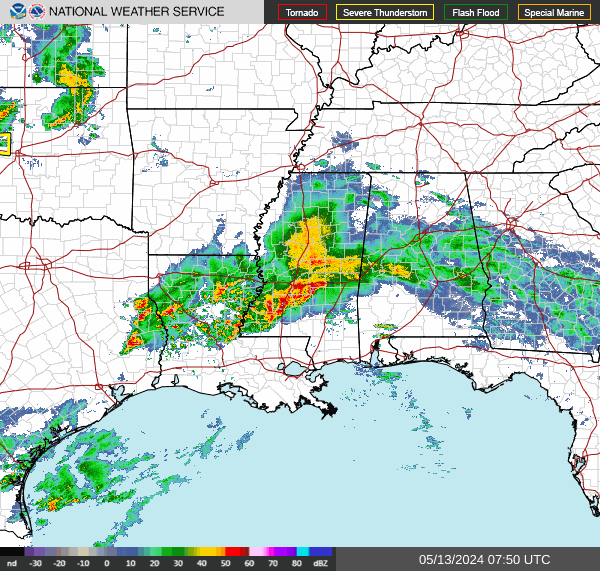
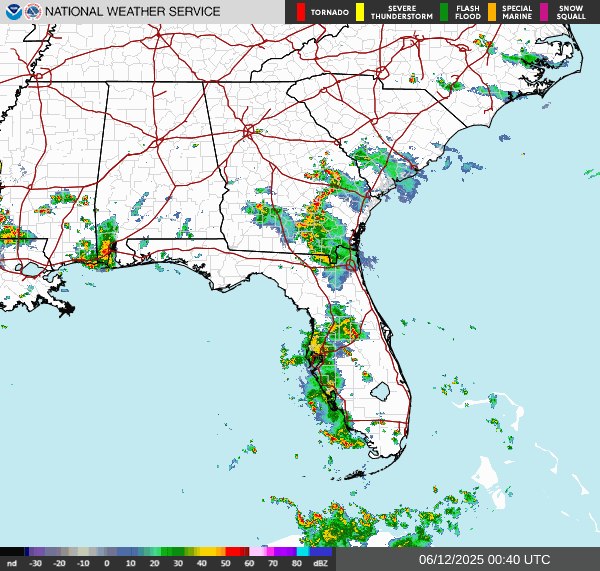




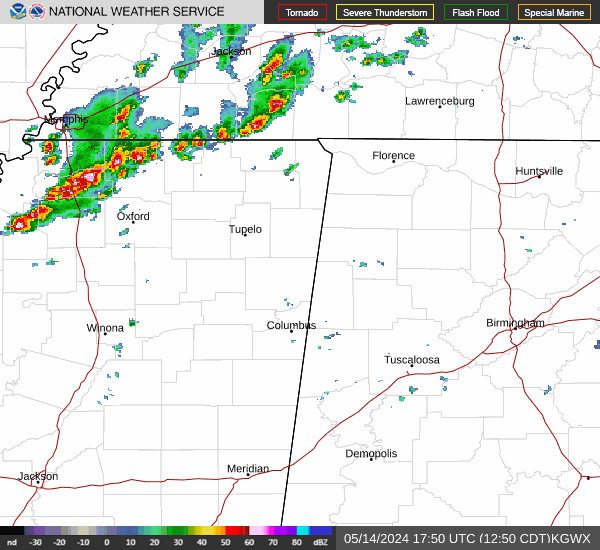
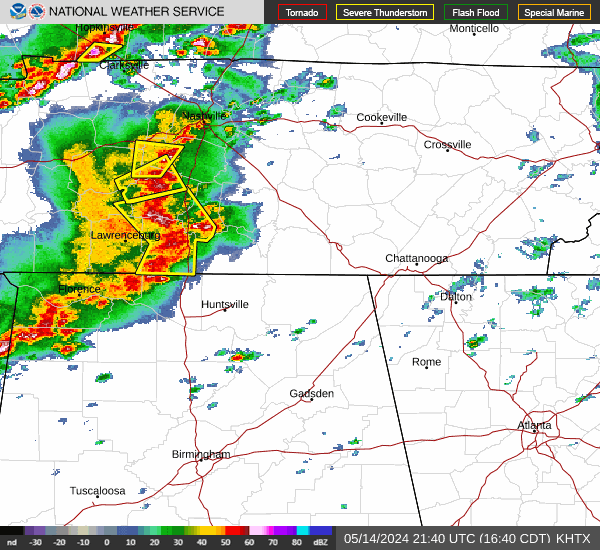
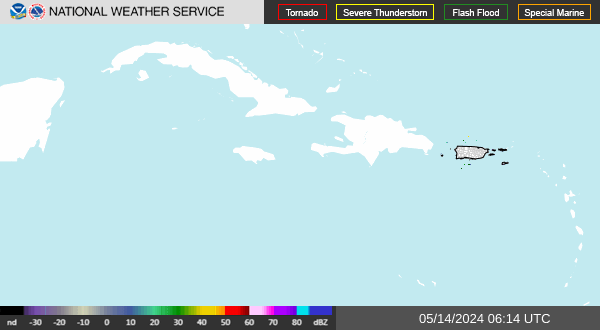



No comments:
Post a Comment